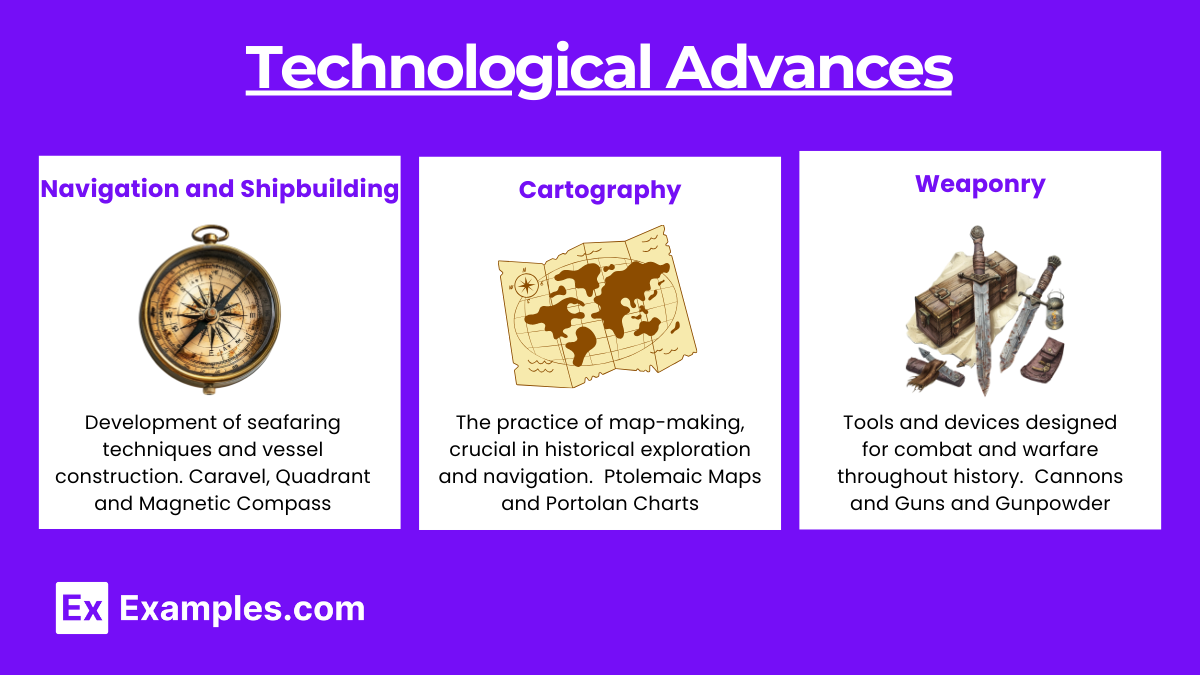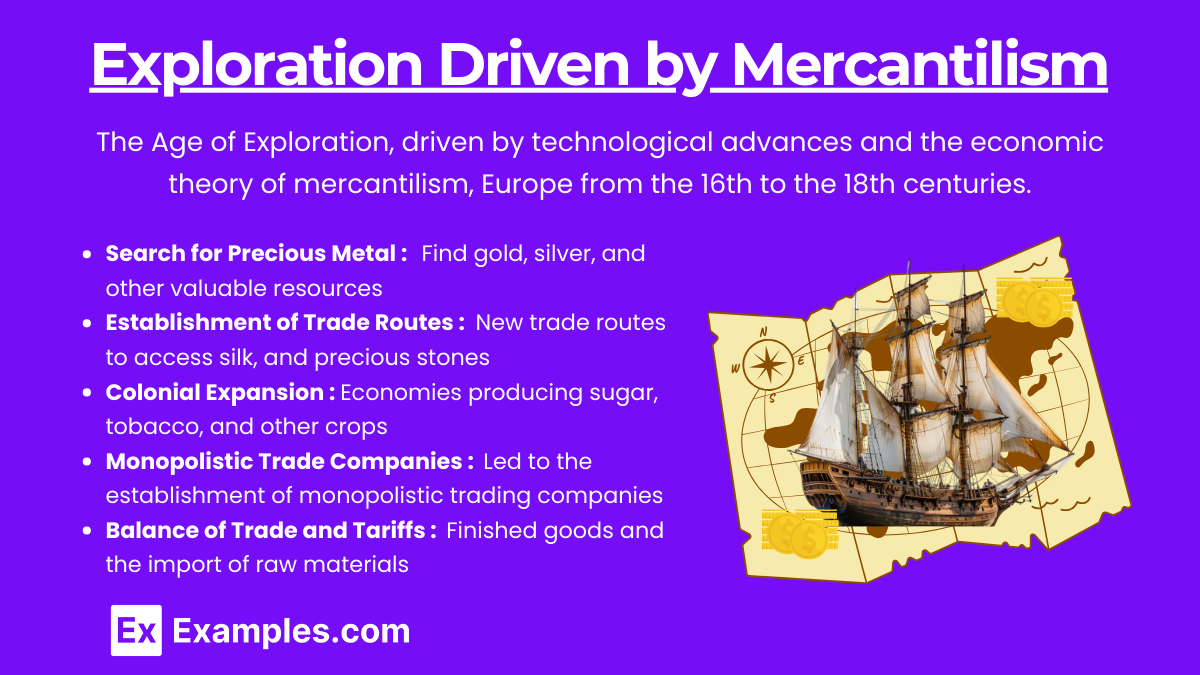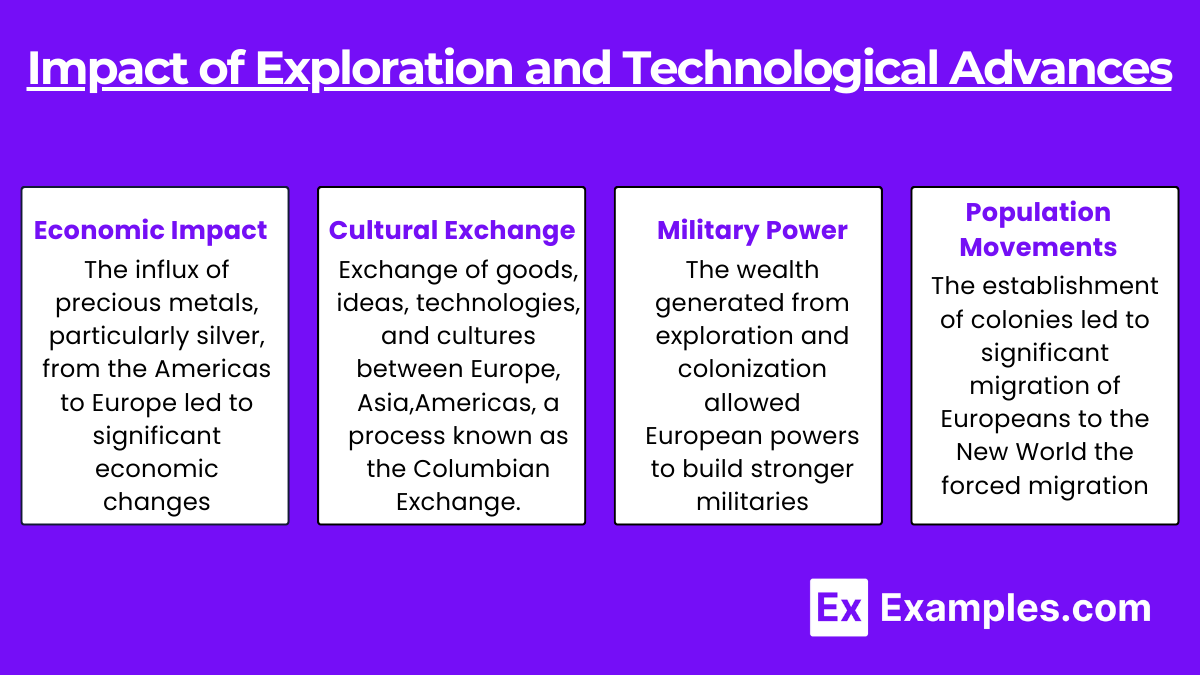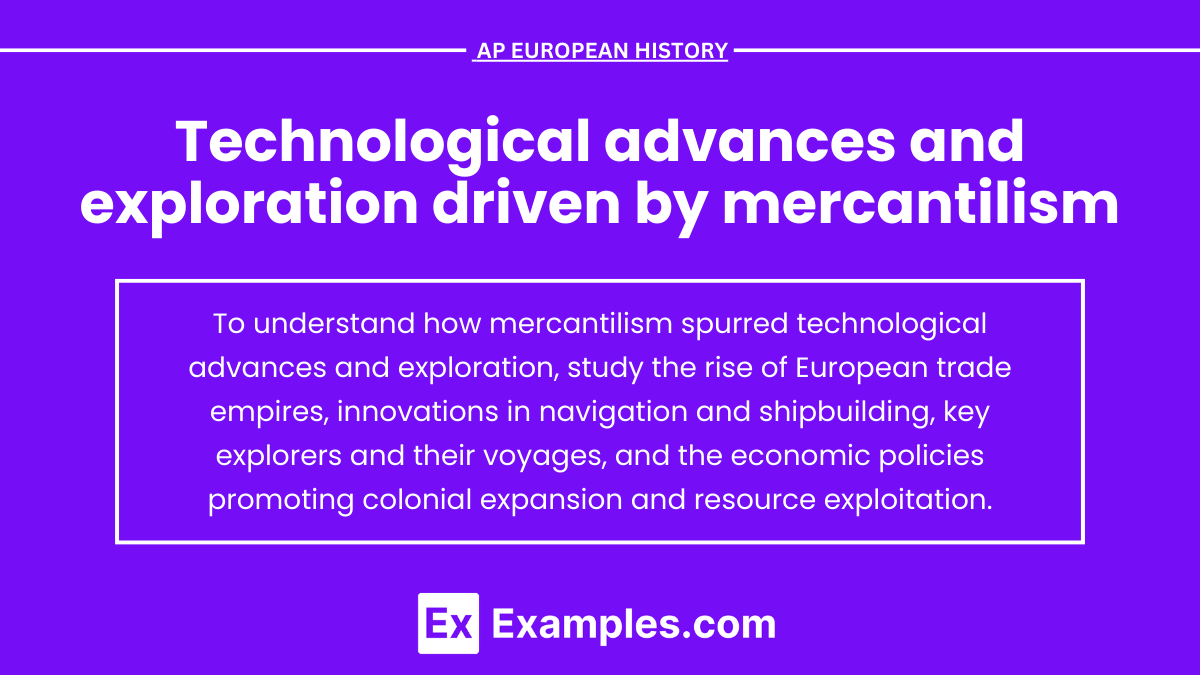The Age of Exploration, driven by technological advances and the economic theory of mercantilism, marked a transformative period in AP European history. Innovations in navigation and shipbuilding, such as the caravel and the magnetic compass, enabled European powers to explore and establish trade routes across the globe. Mercantilism, emphasizing the accumulation of wealth through trade and colonization, motivated nations to expand their influence and control resources. This era laid the foundation for modern global trade networks and significantly shaped the course of world history.
Learning Objectives
Understand how technological advances like the caravel, compass, and astrolabe enabled European exploration. Study the impact of mercantilist policies, including the quest for precious metals and the establishment of monopolistic trade companies. Recognize the role of these factors in expanding European influence globally, shaping colonial empires, and creating global trade networks. Additionally, grasp the economic and cultural consequences of these explorations, such as the Price Revolution and the Columbian Exchange, on both Europe and the wider world.
Technological Advances

Navigation and Shipbuilding: Development of seafaring techniques and vessel construction in history.
Caravel: The Portuguese developed the caravel, a small, highly maneuverable ship. It had a broad bow, lateen sails, and a sternpost rudder, allowing for efficient oceanic voyages.
Astrolabe and Quadrant: These instruments, borrowed and refined from Islamic navigators, allowed sailors to determine their latitude by measuring the altitude of celestial bodies.
Magnetic Compass: Originating from China and improved by Europeans, the magnetic compass provided sailors with a reliable method for determining direction, even when stars or the sun were obscured.
Cartography:
Ptolemaic Maps: The rediscovery and adaptation of Ptolemy's maps during the Renaissance provided a more accurate view of the world, aiding explorers in navigation.
Portolan Charts: These were detailed nautical maps that used compass directions and distances to map coastlines and sea routes accurately.
Weaponry:
Cannons and Guns: Advances in metallurgy led to the development of more effective cannons and handheld firearms, giving European ships and armies a significant advantage in conflicts with indigenous peoples and rival European powers.
Gunpowder: Originally from China, gunpowder technology revolutionized warfare, making European forces more formidable in both offensive and defensive operations.
Exploration Driven by Mercantilism

Mercantilism, an economic theory and practice prevalent in Europe from the 16th to the 18th centuries, emphasized the accumulation of wealth, primarily gold and silver, as a measure of national strength. It also advocated for a favorable balance of trade, encouraging exports over imports.
Search for Precious Metals:
The desire to find gold, silver, and other valuable resources was a significant motivator for exploration. Spanish conquistadors, such as Hernán Cortés and Francisco Pizarro, sought to exploit the wealth of the Americas, particularly the gold and silver mines in Mexico and Peru.
Establishment of Trade Routes:
European powers sought new trade routes to access luxury goods like spices, silk, and precious stones, which were previously obtained through intermediaries at high costs.
The Portuguese, under figures like Vasco da Gama, pioneered the sea route to India around the Cape of Good Hope, establishing a direct trade route for spices.
Colonial Expansion:
European nations established colonies to exploit natural resources, produce cash crops, and create markets for European goods.
The Spanish and Portuguese empires in the Americas were initially motivated by the search for gold but later shifted towards plantation economies producing sugar, tobacco, and other crops.
Monopolistic Trade Companies:
Mercantilist policies led to the establishment of monopolistic trading companies, such as the British East India Company and the Dutch East India Company. These companies were granted exclusive rights to trade in particular regions, often backed by military force.
These companies established trading posts and colonies, which became crucial for controlling trade routes and resources.
Balance of Trade and Tariffs:
Mercantilist policies encouraged the export of finished goods and the import of raw materials. This led to the development of industries in Europe and increased self-sufficiency.
Tariffs and restrictions on imports were imposed to protect domestic industries and ensure a favorable balance of trade.
Impact of Exploration and Technological Advances

Economic Impact : The influx of precious metals, particularly silver, from the Americas to Europe led to significant economic changes, including inflation and the expansion of global trade networks.
Cultural Exchange : The Age of Exploration facilitated the exchange of goods, ideas, technologies, and cultures between Europe, Asia, Africa, and the Americas, a process known as the Columbian Exchange.
Political and Military Power : The wealth generated from exploration and colonization allowed European powers to build stronger militaries and assert dominance over global trade routes.
Population Movements : The establishment of colonies led to significant migration of Europeans to the New World, as well as the forced migration of enslaved Africans.
Examples of Technological Advances and Exploration Driven by Mercantilism
Caravel Development: A nimble ship that improved long-distance sea travel, facilitating exploration of new trade routes and territories.
Astrolabe Use: Enhanced navigational tool for determining latitude, crucial for exploring and mapping new lands.
Joint-Stock Companies: Organizations like the British and Dutch East India Companies funded expeditions, expanding global trade and colonization.
Marine Chronometer: An accurate timekeeping device that allowed precise navigation by calculating longitude at sea.
Gunpowder and Firearms: Advances in weaponry provided European explorers with a technological edge, enabling colonization and control of new territories.
Practice Questions on Technological Advances and Exploration Driven by Mercantilism
Question 1:
Which of the following technological advancements most significantly facilitated European exploration during the Age of Mercantilism?
A) The steam engine
B) The compass
C) The printing press
D) The telescope
Answer: B) The compass
Explanation:
The compass was crucial for navigation, especially during long sea voyages. Its ability to provide a consistent direction helped sailors determine their course when landmarks were not visible, thus facilitating the expansion of European exploration. While other technologies like the steam engine and the telescope were important in their own right, they were not as directly influential in the context of early maritime exploration. The printing press, although significant in spreading knowledge, did not directly affect navigation.
Question 2:
How did the invention of the caravel impact European exploration during the Age of Mercantilism?
A) It allowed for faster communication across continents.
B) It provided a more effective means of transporting goods overland.
C) It enabled longer voyages with greater cargo capacity and maneuverability.
D) It introduced new agricultural practices in Europe.
Answer: C) It enabled longer voyages with greater cargo capacity and maneuverability.
Explanation:
The caravel was a revolutionary ship design that allowed for more extended and efficient exploration. It had a combination of square and lateen sails, enabling it to sail more effectively into the wind and maneuver easily. This advancement was crucial for European powers during the Age of Mercantilism, as it enabled explorers to travel further and transport more goods, thereby enhancing trade and colonial expansion.
Question 3:
What role did the astrolabe play in the Age of Exploration driven by mercantilism?
A) It helped determine the distance between European ports and the Americas.
B) It was used to navigate by calculating the position of celestial bodies.
C) It provided a means to measure the depth of the ocean.
D) It facilitated the translation of foreign languages encountered during exploration.
Answer: B) It was used to navigate by calculating the position of celestial bodies.
Explanation:
The astrolabe was an essential tool for navigation during the Age of Exploration. It allowed sailors to measure the altitude of stars above the horizon, helping them determine their latitude at sea. This was especially important before the development of accurate marine chronometers, as it enabled more precise navigation across open oceans, thus supporting the mercantilist goals of expanding trade routes and colonial territories.


